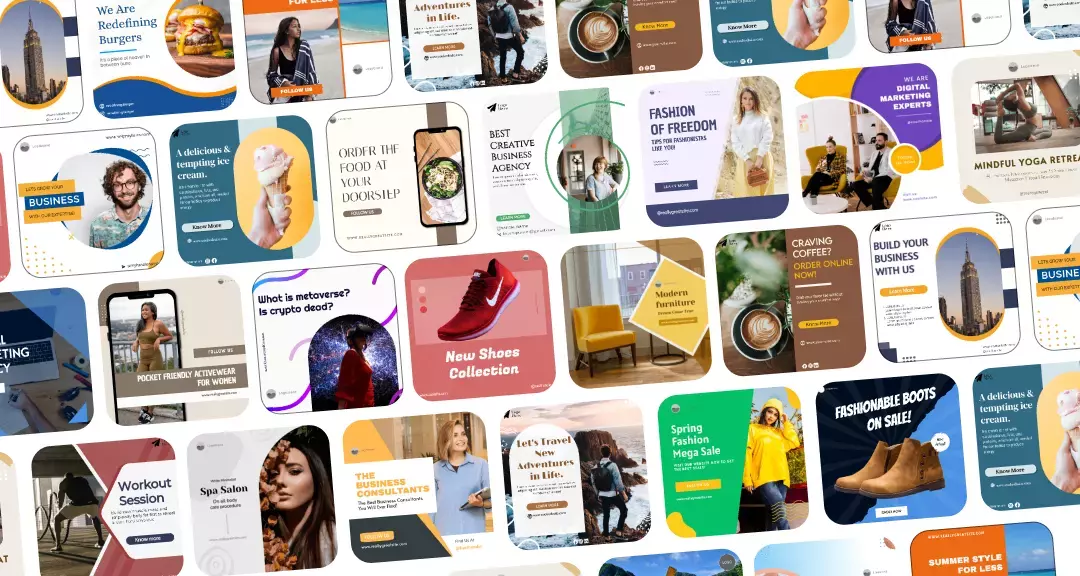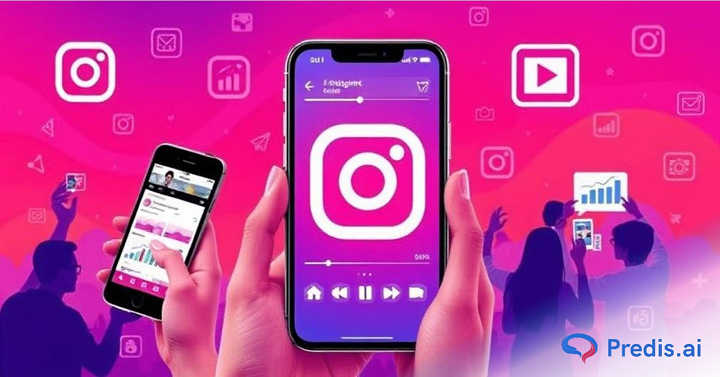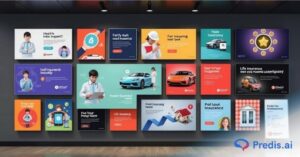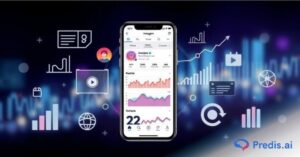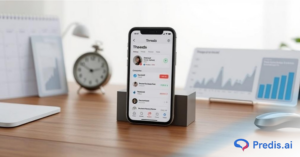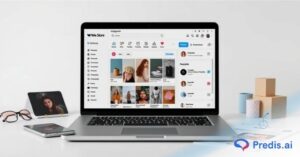Instagram has changed into a lot more than just a place to share photos. With more than 2 billion active users every month, it’s a great way for brands to connect with, engage, and attract their ideal customers. You need to know how to use Instagram ads if you want to make your company more visible, get more people to interact with it, or turn those interactions into sales.There is a lot to learn about Instagram ads, so this guide will cover everything from the basics to advanced techniques. This is the only Instagram advertising guide you’ll ever need, whether you run a small business or work in digital marketing.
What Are Instagram Ads?
Ads on Instagram are paid posts that businesses use to reach a larger or more specific group of people on the app. These ads show up all over the site, in Feeds, Stories, the Explore page, and Reels.
They look almost the same as regular posts, but they have a “Sponsored” title and often a button that tells people what to do. What makes them unique is that you can really target your audience based on things like age, gender, hobbies, behavior, and more.
The best things about Instagram ads are:
- More people saw the brand
- High rates of engagement
- Laser-focused selection of audiences
- Ad types that work best on mobile devices
- It works perfectly with Facebook Ads Manager.
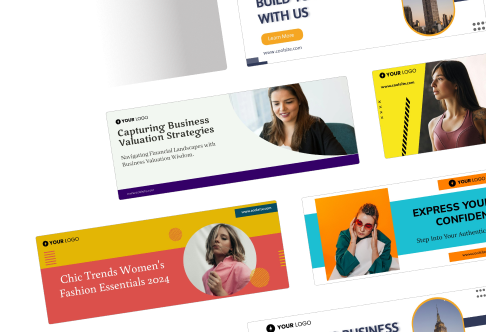
Why Instagram Advertising is Important?
The social media world is still dominated by Instagram in the year 2025. It is important to include advertising on Instagram as part of your marketing strategy for the following reasons:
- With over 70% of Instagram users following at least one business account, the platform has a massive user base.
- In comparison to other platforms, Instagram has one of the higher engagement rates, making it one of the most popular social media networks.
- Visual appeal: Being a platform that prioritizes visuals makes it simpler to establish an emotional connection with each of your audience members.
- Instagram is already a major participant in the social commerce space thanks to it’s shoppable posts and hassle-free checkout process.
- The use of advanced targeting: This is made possible by the data that Meta provides, which allows you to target users based on extremely exact factors.
Types of Instagram Ads You Can Run
The objectives of your campaign should guide your selection of the appropriate advertisement format. The following is a rundown of each form of advertisement that can be seen on Instagram:
- Photo Ads: The perfect way to showcase a product or service with only one image is through the use of photo ads.
- Video Ads: The use of video advertisements is ideal for telling a story or demonstrating how a product works.
- Carousel Ads: Users are able to swipe through a number of images or videos when using carousel ads.
- Stories Ads: The full-screen vertical advertisements that show in between Stories are known as Stories Ads.
- Reels Ads: Users can be engaged through the usage of short-form video content using Reels Ads.
- Explore Ads: Ads that appear in the Explore section, which is where people find new material on the website.
- Collection Ads: When you combine videos or images with product catalogs, you can create collection ads.
- Shopping Ads: Tag products directly within your advertisements to make it simpler for customers to make purchases.
- Lead Ads: The purpose of Lead Ads is to collect leads without requiring the user to leave the app.
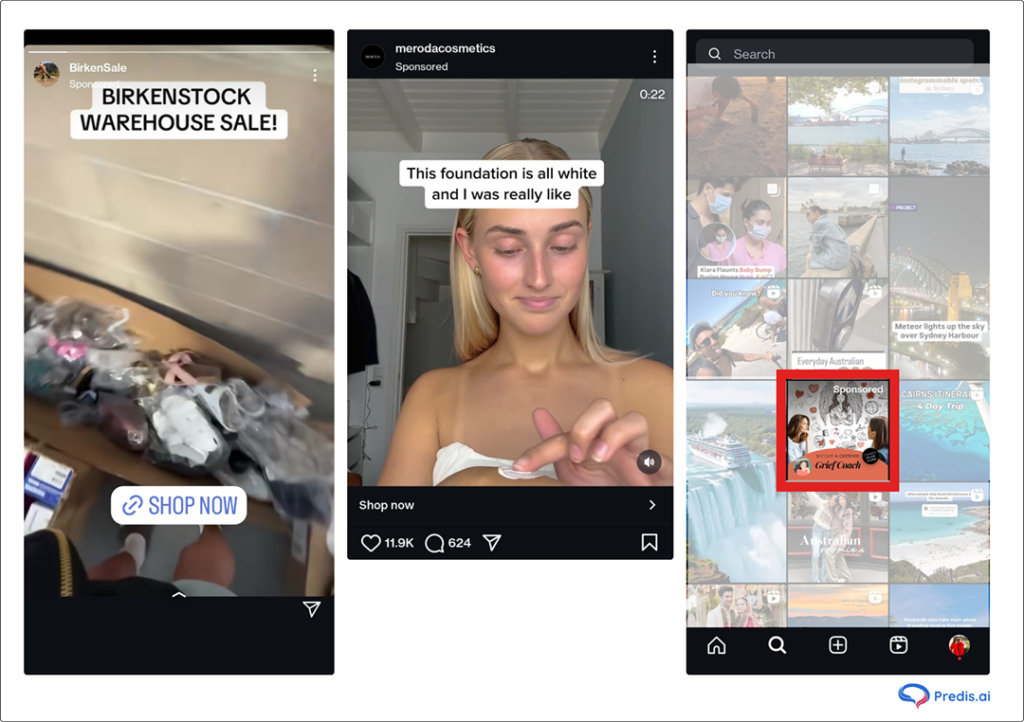
Instagram Ads Specs and Sizes
Instagram has a set of standard ad formats and ad sizes. To ensure your ads appear polished and professional, follow the below quick guide to updated specs:
- Feed Images/Videos: 1080 x 1080 px (1:1 ratio)
- Stories/Reels: 1080 x 1920 px (9:16 ratio)
- Video Length: Up to 60 seconds for Feed, 15 seconds for Stories
- File Size: Max 4GB for videos, 30MB for images
How to Set Up Instagram Ads?
- Change to a Creator or Business Account
- Facebook Business Manager link
- Click “Create” after selecting Ads Manager.
- Select the goal of your campaign (traffic, conversions, awareness, etc.).
- Describe your target audience‘s location, hobbies, and habits.
- Establish Your Timetable and Budget
- Select Ad Placements (Manual or Automated)
- Create Your Own Creative (pictures, videos, ad copy, and call to action).
- Examine and publish
Instagram Ads Cost: How Much Should You Spend?
Instagram advertising is bidding-based, thus costs depend on competition, audience, location, and campaign goal.
- In 2025, CPC (cost-per-click) will average $0.70–$2.50, and CPM will average $5–$15. CPA varies by industry, landing page, and conversion rate.
- New advertisers should test audience targeting and creatives with $5–$20 daily budgets. As performance data accumulates, you need to progressively increase funding for high-ROI programs.
- Prioritize conversions over reach and clicks. Monitor ROAS, CTR, and engagement rate to make your ad spend profitable.
- To maximize budget results, use A/B tests and use automated bidding tactics.
Budgeting Tips:
- Start Small and Scale: Test the waters with a small budget. You may learn what works for your audience without wasting marketing money. Once you find profitable tactics, steadily increase your budget to optimize outcomes.
- A/B Test: Try different ad creatives, copy, headlines, and CTAs. Split testing lets you compare various ad variants to see which one performs better, improving your campaigns.
- Focus on ROI, Not Clicks: Don’t get distracted by clicks and impressions. Focus on campaigns that generate leads, sales, or conversions. Measure your ROI with data analytics and spend your budget on the best ads.
Creative Best Practices for High-Converting Instagram Ads
- Use high-quality visuals that reflect your brand
- Write clear, benefit-driven ad copy
- Include a strong CTA (Shop Now, Learn More, Sign Up)
- Use native formats like Reels or Stories for better engagement
- Follow the 80/20 rule – 80% value, 20% promotion
Common Instagram Advertising Mistakes to Avoid
- Ignoring audience research. Targeting the right kind of audience is very essential for maximum conversions.
- Using generic images or stock photos for your ad copy
- Not optimizing your Instagram ad for mobile
- Disregarding A/B tests
- Disregarding performance metrics
Key Instagram Ads Metrics to Track
- Impressions: The number of times your advertisement was viewed
- Reach is the total number of distinct users who saw your advertisement.
- Return on Ad Spend (ROAS) is a metric used to measure engagement. Assesses profitability
- Likes, shares, and comments indicate the engagement rate.
- For further in-depth information, set up UTM parameters and utilize Google Analytics.
Instagram Advertising Trends
- AI-Powered Targeting: AI is changing how brands interact with customers. Instagram advertising uses AI in 2025 to personalize ads. For improved targeting, advertisers can construct micro-segments based on user behavior including historical engagement, browsing behaviors, shopping activity, and interaction time. AI allows real-time behavioral targeting instead of demographics. If a person frequently engages with fitness material and visits wellness retailers online, your protein supplement ad can appear when they’re most likely to buy.
- Shoppable Reels: Shoppable Reels now lets brands tag goods right in their videos, so viewers can buy them right away without leaving the app. This is huge for businesses that sell things. In a reel, you can show real-life use cases, product lessons, or customer stories. Then, you can add a “tap to shop” button right on the screen. This smooth, mobile-first experience increases sales by a huge amount.
- AR (Augmented Reality) Ads: AR ads are revolutionizing brand-consumer interactions. AR makes Instagram ads exciting, immersive, and engaging, from virtually trying on eyeglasses to imagining furnishings in your home. Non-gimmick interactive commercials boost brand remember and engagement. In real time, users can test items, play with filters, and explore branded locations, making ads memorable and shareable.
- Influencer Whitelisting: Influencer whitelisting, which is now often just called “Partnership Ads,” lets brands run ads from an influencer’s account instead of their own.This gives you the best of both worlds: real influencers and paid reach.
- User-Generated Content (UGC): UGC is a major Instagram ad tactic in 2025. Real customers using your product develops trust and social proof. UGC in Instagram ads humanizes your brand and boosts relatability and click-through rates. Customer reviews, testimonials, tagged articles, and unboxing videos make great ads.
Best Tools for Instagram Advertising
- Predis AI: best social media management tool that makes use of AI. You can generate ads using AI and can also use features like auto posting, scheduling etc.
- Meta Ads Manager: this tool is best for creating and managing Instagram ad campaigns
- Canva / Adobe Express: They are easy and design tools
- Hootsuite / Buffer: You will get tools for scheduling & performance insights
- Later: offers visual content planner
- Google Analytics: is best for performance tracking
Real-Life Examples of Instagram Ads
Here are the top three real life examples of Instagram ads:
- Nike – Uses Reels and motivational storytelling
- Glossier – Leverages user-generated content and product close-ups
- Airbnb – Showcases stunning locations using carousel and story ads
Conclusion
Instagram advertising is one of the most effective ways to grow your brand online. With the right strategy, visuals, and targeting, you can turn Instagram into a powerhouse for traffic, engagement, and conversions. Now that you have this all-in-one guide, it’s time to implement what you’ve learned and start building ads that actually work.
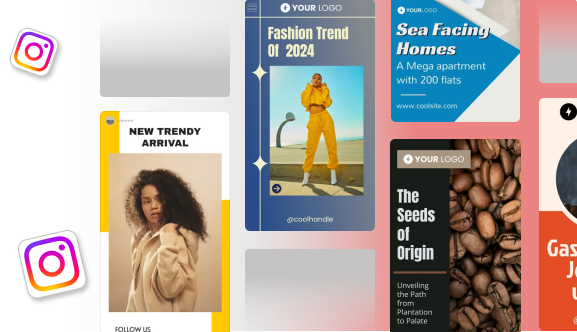
FAQs
It depends on your audience and goals. Instagram offers higher engagement for visual content, while Facebook has a broader demographic reach.
Yes! You can start with as little as $5/day and scale as you go.
Keep it under 15 seconds for Stories and Reels. For feed videos, under 30 seconds is best.
Test consistently, but refresh creatives every 2-3 weeks to avoid ad fatigue.
